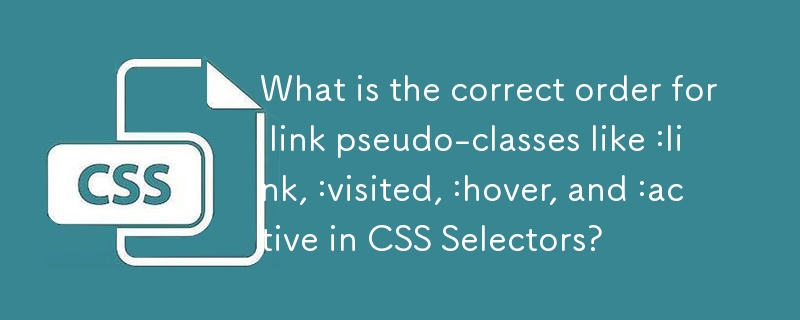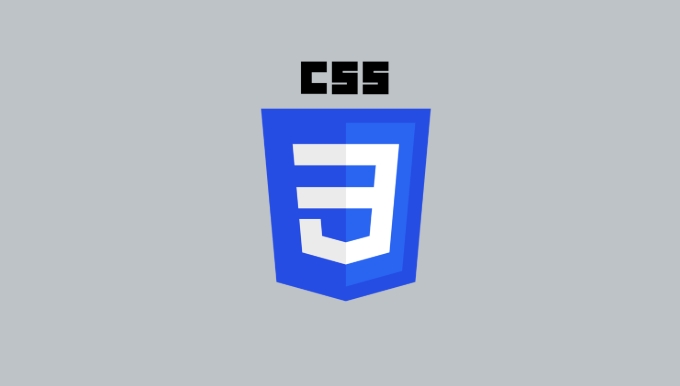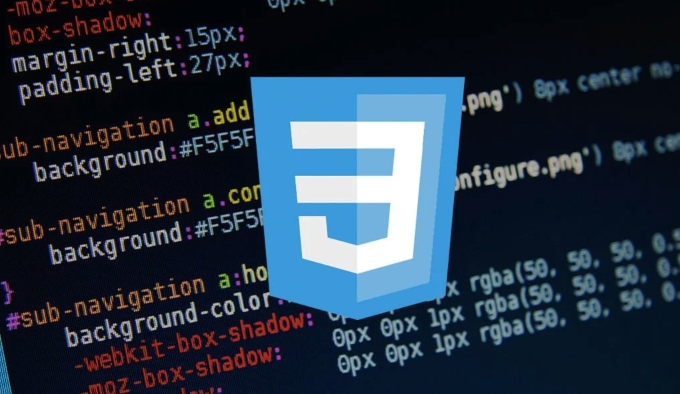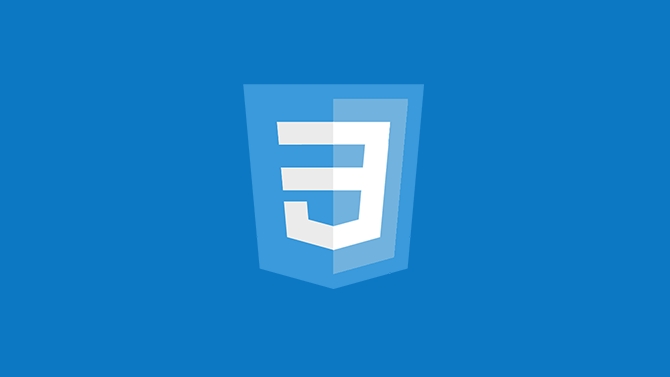 Web Front-end
Web Front-end
 CSS Tutorial
CSS Tutorial
 What is the correct order for link pseudo-classes like :link, :visited, :hover, and :active in CSS Selectors?
What is the correct order for link pseudo-classes like :link, :visited, :hover, and :active in CSS Selectors?
What is the correct order for link pseudo-classes like :link, :visited, :hover, and :active in CSS Selectors?
Jun 28, 2025 am 12:02 AMIn CSS, the order of pseudo-class selectors: link, :visited, :hover and :active are very important. They must be written in LVHA (Link → Visited → Hover → Active), because when the styles are of the same priority, the subsequent rules will override the previous one; 1. :link sets the unreached link style; 2. :visited sets the accessed link style, but is restricted by browser privacy; 3. :hover sets the mouse hover effect, and the mobile side may need additional processing; 4. :active sets the style when clicking to provide instant feedback; this order ensures that all statuses can be displayed correctly to avoid browser inconsistencies.

In CSS, :link , :visited , :hover and :active are pseudo-class selectors commonly used for link styles. The order they are written is critical because if the order is incorrect, some styles may not appear as expected.

The correct order is:

:link → :visited → :hover → :active
This is called the LVHA order (Link → Visited → Hover → Active).

Why is the order important?
The style in CSS is "latest", that is, if the two selectors have the same priority, the latter will override the previous one.
For example:
a:hover { color: blue; }
a: visited { color: purple; } If you write :hover in front of :visited , it may turn blue when the mouse is hovered over a visited link; but if written in reverse, inconsistent behavior may occur, especially in different browsers.
Therefore, in order for all states to be displayed normally, it must be written in the order of LVHA.
Recommendations on the role and usage of each pseudo-class
:link ——Unvised link
- Only effective for links that have not been clicked by users.
- It is usually used to set the default link color, such as blue.
Example:
a:link {
color: #0000EE;
} :visited —— Links visited
- Works on links that the user has visited.
- For privacy protection, modern browsers limit the types of styles that can be applied (such as not modifying certain sizes or background images).
suggestion:
- Only change the basic styles such as colors and fonts.
- Don't try to track user behavior through
:visited.
Example:
a: visited {
color: #551A8B; /* Default accessed link color*/
} :hover —— The status when the mouse is hovered
- Triggered when the user's mouse pointer moves to the link.
- It is often used to enhance interactive feedback, such as enlarging text and changing background color.
hint:
- On mobile devices
:hovermay behave inconsistently, and some require a click to "activate". - If you want the mobile terminal to have similar effects, you may need to cooperate with JavaScript or other technologies.
Example:
a:hover {
color: #FF0000;
text-decoration: underline;
} :active — When the link is activated (clicked)
- Effective when the user clicks on a link but has not released the mouse button.
- It is usually used to provide click feedback, such as darkening colors or button pressing effects.
Skill:
- This state is very short-lived, so the style changes should be obvious but not excessive.
- You can combine transition animation to improve the experience.
Example:
a:active {
color: #008000;
}Common practices in actual development
- Many developers only care about
:hoverand:active, and ignore:linkand:visited, especially internal links or no distinction between access. - When using a CSS preprocessor (such as Sass), these pseudo-classes can be nested under the main selector for clearer.
- If you are using CSS frameworks (such as Tailwind, Bootstrap), they usually have already processed the pseudo-class order of the link.
For example, in Sass:
a {
&:link { color: blue; }
&:visited { color: purple; }
&:hover { color: red; }
&:active { color: green; }
}Basically that's it. Just remember the order of LVHA, most link style conflicts can be avoided.
The above is the detailed content of What is the correct order for link pseudo-classes like :link, :visited, :hover, and :active in CSS Selectors?. For more information, please follow other related articles on the PHP Chinese website!

Hot AI Tools

Undress AI Tool
Undress images for free

Undresser.AI Undress
AI-powered app for creating realistic nude photos

AI Clothes Remover
Online AI tool for removing clothes from photos.

Clothoff.io
AI clothes remover

Video Face Swap
Swap faces in any video effortlessly with our completely free AI face swap tool!

Hot Article

Hot Tools

Notepad++7.3.1
Easy-to-use and free code editor

SublimeText3 Chinese version
Chinese version, very easy to use

Zend Studio 13.0.1
Powerful PHP integrated development environment

Dreamweaver CS6
Visual web development tools

SublimeText3 Mac version
God-level code editing software (SublimeText3)
 CSS tutorial for creating loading spinners and animations
Jul 07, 2025 am 12:07 AM
CSS tutorial for creating loading spinners and animations
Jul 07, 2025 am 12:07 AM
There are three ways to create a CSS loading rotator: 1. Use the basic rotator of borders to achieve simple animation through HTML and CSS; 2. Use a custom rotator of multiple points to achieve the jump effect through different delay times; 3. Add a rotator in the button and switch classes through JavaScript to display the loading status. Each approach emphasizes the importance of design details such as color, size, accessibility and performance optimization to enhance the user experience.
 Addressing CSS Browser Compatibility issues and prefixes
Jul 07, 2025 am 01:44 AM
Addressing CSS Browser Compatibility issues and prefixes
Jul 07, 2025 am 01:44 AM
To deal with CSS browser compatibility and prefix issues, you need to understand the differences in browser support and use vendor prefixes reasonably. 1. Understand common problems such as Flexbox and Grid support, position:sticky invalid, and animation performance is different; 2. Check CanIuse confirmation feature support status; 3. Correctly use -webkit-, -moz-, -ms-, -o- and other manufacturer prefixes; 4. It is recommended to use Autoprefixer to automatically add prefixes; 5. Install PostCSS and configure browserslist to specify the target browser; 6. Automatically handle compatibility during construction; 7. Modernizr detection features can be used for old projects; 8. No need to pursue consistency of all browsers,
 What is the difference between display: inline, display: block, and display: inline-block?
Jul 11, 2025 am 03:25 AM
What is the difference between display: inline, display: block, and display: inline-block?
Jul 11, 2025 am 03:25 AM
Themaindifferencesbetweendisplay:inline,block,andinline-blockinHTML/CSSarelayoutbehavior,spaceusage,andstylingcontrol.1.Inlineelementsflowwithtext,don’tstartonnewlines,ignorewidth/height,andonlyapplyhorizontalpadding/margins—idealforinlinetextstyling
 Creating custom shapes with css clip-path
Jul 09, 2025 am 01:29 AM
Creating custom shapes with css clip-path
Jul 09, 2025 am 01:29 AM
Use the clip-path attribute of CSS to crop elements into custom shapes, such as triangles, circular notches, polygons, etc., without relying on pictures or SVGs. Its advantages include: 1. Supports a variety of basic shapes such as circle, ellipse, polygon, etc.; 2. Responsive adjustment and adaptable to mobile terminals; 3. Easy to animation, and can be combined with hover or JavaScript to achieve dynamic effects; 4. It does not affect the layout flow, and only crops the display area. Common usages are such as circular clip-path:circle (50pxatcenter) and triangle clip-path:polygon (50%0%, 100 0%, 0 0%). Notice
 Styling visited links differently with CSS
Jul 11, 2025 am 03:26 AM
Styling visited links differently with CSS
Jul 11, 2025 am 03:26 AM
Setting the style of links you have visited can improve the user experience, especially in content-intensive websites to help users navigate better. 1. Use CSS's: visited pseudo-class to define the style of the visited link, such as color changes; 2. Note that the browser only allows modification of some attributes due to privacy restrictions; 3. The color selection should be coordinated with the overall style to avoid abruptness; 4. The mobile terminal may not display this effect, and it is recommended to combine it with other visual prompts such as icon auxiliary logos.
 How to create responsive images using CSS?
Jul 15, 2025 am 01:10 AM
How to create responsive images using CSS?
Jul 15, 2025 am 01:10 AM
To create responsive images using CSS, it can be mainly achieved through the following methods: 1. Use max-width:100% and height:auto to allow the image to adapt to the container width while maintaining the proportion; 2. Use HTML's srcset and sizes attributes to intelligently load the image sources adapted to different screens; 3. Use object-fit and object-position to control image cropping and focus display. Together, these methods ensure that the images are presented clearly and beautifully on different devices.
 What are common CSS browser inconsistencies?
Jul 26, 2025 am 07:04 AM
What are common CSS browser inconsistencies?
Jul 26, 2025 am 07:04 AM
Different browsers have differences in CSS parsing, resulting in inconsistent display effects, mainly including the default style difference, box model calculation method, Flexbox and Grid layout support level, and inconsistent behavior of certain CSS attributes. 1. The default style processing is inconsistent. The solution is to use CSSReset or Normalize.css to unify the initial style; 2. The box model calculation method of the old version of IE is different. It is recommended to use box-sizing:border-box in a unified manner; 3. Flexbox and Grid perform differently in edge cases or in old versions. More tests and use Autoprefixer; 4. Some CSS attribute behaviors are inconsistent. CanIuse must be consulted and downgraded.
 Demystifying CSS Units: px, em, rem, vw, vh comparisons
Jul 08, 2025 am 02:16 AM
Demystifying CSS Units: px, em, rem, vw, vh comparisons
Jul 08, 2025 am 02:16 AM
The choice of CSS units depends on design requirements and responsive requirements. 1.px is used for fixed size, suitable for precise control but lack of elasticity; 2.em is a relative unit, which is easily caused by the influence of the parent element, while rem is more stable based on the root element and is suitable for global scaling; 3.vw/vh is based on the viewport size, suitable for responsive design, but attention should be paid to the performance under extreme screens; 4. When choosing, it should be determined based on whether responsive adjustments, element hierarchy relationships and viewport dependence. Reasonable use can improve layout flexibility and maintenance.





